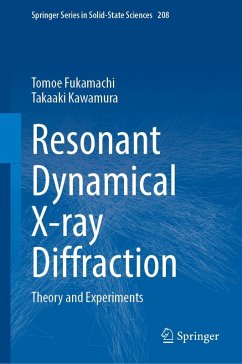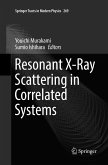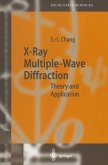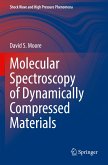This book has three keywords: X-ray resonant scattering, diffraction, and multiple scattering. X-ray resonant scattering occurs due to the excitation of the inner shell electrons of atoms. Now that it is possible to obtain high-intensity X-rays with a continuous spectrum using synchrotron radiation, the use of resonant scattering becomes easier. Recent advances in crystal growth technology enables us to create many perfect crystals. X-ray multiple scattering is important in perfect crystals, and dynamical theory of X-ray diffraction deals with it.
In addition to ordinary scattering processes due to Thomson scattering, this book explains resonant scattering in detail, discusses the phase problems using resonant scattering, and derives a dynamic diffraction theory that treats it equivalently to Thomson scattering. The characteristics of dynamical diffraction due to resonant scattering and its experimental verification are explained. The effect of anomalous transmission in resonant dynamical diffraction, which greatly reduces the absorption coefficient, are discussed along with its important applications. For example, under anomalous transmission conditions, the trajectory of an X-ray in a slightly curved parallel plate crystal becomes parabolic. By confining this X-ray within a thin crystal, a waveguide can be formed that allows the X-ray to propagate long distances within the crystal.
In addition to ordinary scattering processes due to Thomson scattering, this book explains resonant scattering in detail, discusses the phase problems using resonant scattering, and derives a dynamic diffraction theory that treats it equivalently to Thomson scattering. The characteristics of dynamical diffraction due to resonant scattering and its experimental verification are explained. The effect of anomalous transmission in resonant dynamical diffraction, which greatly reduces the absorption coefficient, are discussed along with its important applications. For example, under anomalous transmission conditions, the trajectory of an X-ray in a slightly curved parallel plate crystal becomes parabolic. By confining this X-ray within a thin crystal, a waveguide can be formed that allows the X-ray to propagate long distances within the crystal.








